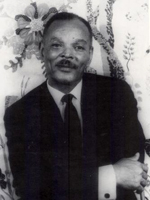Rachel Carson Homestead [PA]
The Rachel Carson Homestead preserves the farmhouse in which Rachel Carson (1907-1964), famed author and environmentalist, was born. Carson is best known for her 1962 book, Silent Spring which cautions against use of chemical pesticides without further research into the ways in which chemicals may alter the environment and/or human health. The site also includes a nature trail and organic garden.
The homestead offers one-hour guided tours of the house and grounds, a 1/4-mile trail with interpretive signage, a garden, summer camps, hands-on educational programs which correspond to state educational standards, and Scout programs. Reservations are required for tours of the house and for all groups of 15 or more. The website offers lesson plans and a suggested reading list.
